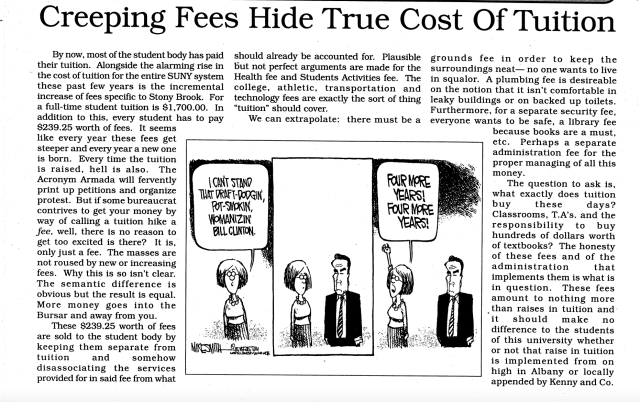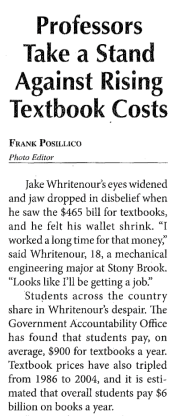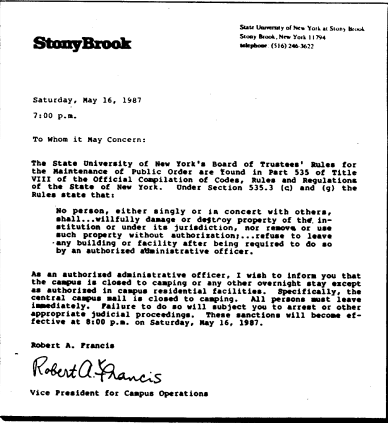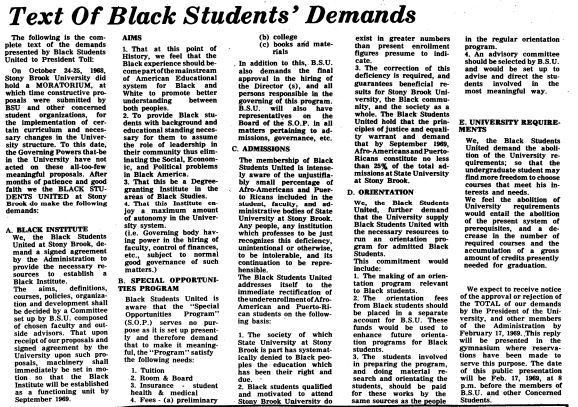
Kelcie Eberharth is the head archivist at The Statesman and an editor at Stony Brook’s Undergraduate History Journal. This article is co-written with Assistant Archivist Liam Noonan, an undergraduate history major.
The average cost of textbooks and other reading materials for a four-year post-secondary student in the 2020-21 academic year was $1,420.
When compared to the constantly growing tuition fees at four-year universities, this cost creates an additional burden on many full-time students. Tuition costs have risen dramatically even in the COVID-19 virtual learning environment, with a 1.6% increase for 2021-2022.
Stony Brook has proved to be no exception to this phenomenon. Students across the country have sought other means of acquiring textbooks, whether it be through third-party sources or more time-consuming measures, such as scanning available books through the library. Sixty percent of students admitted to even delaying the purchase of a textbook, knowing it could harm their grades.
Issues concerning textbooks at Stony Brook have been featured in The Statesman frequently. While the price of and accessibility to textbooks has been the root of contention, students and staff alike have put pen to paper arguing different outlooks and potential alternatives to the use of textbooks in the classroom.
Rich Bergovoy, a Statesman writer, revealed a former Follett employee’s significant insight into the campus bookstore’s practice of selling secondhand textbooks at market price in a 1978 article titled “Bookstore Rips off Thousands.”
While the article focuses on one aspect of the University’s textbook sales, it represents the many other complaints students have today about textbook sales.
Textbook prices and tuition costs have been ongoing for decades. In 1996, The Statesman released an editorial piece, “Creeping Fees Hide True Cost of Tuition,” on fees outside of tuition, causing students to pay skyrocketing prices for their education.

The $239.25 of fees for that school year, coupled with spending hundreds on textbooks, made one reading the article in question what their tuition was really paying for.
A 1999 commentary written by Christina M. Mueller develops “A Novel Idea.” New York Public Interest Research Group (NYPIRG) created a new book exchange in collaboration with Polity in order to bring textbooks to students in an easier, more affordable way.

Looking for a textbook, a student would simply have to put in the textbook name, author and the price they would pay.
That isn’t a typo; this program would enable students to choose how much to pay for their books. The program was in its pilot phase when this piece was public, but with soaring textbook prices today, it appears the book exchange fell flat.
This growing concern for textbook prices has not been strictly limited to the student body; professors at various universities have noted the financial burden their books have placed on their students.
In a 2009 piece published in The Statesman, professors such as R. Preston McAfee of California Institute of Technology, and Stony Brook’s own Warren Siegel, opted to publish their books online to ease the financial burden that getting a physical textbook may bring.

Although textbook costs might not be a constant issue at the forefront of students’ minds, it remains an ongoing concern for many students whose first weeks of the semester are marked by costly and stressful purchases.
The sums students will spend on textbooks each have been a consistent topic of discussion amongst the Stony Brook faculty and student population, and it seems it will stay that way for the foreseeable future.













